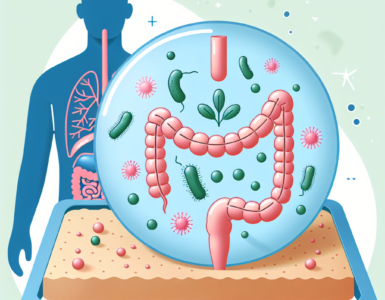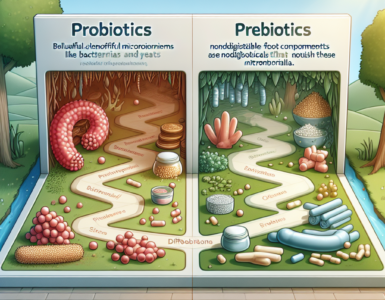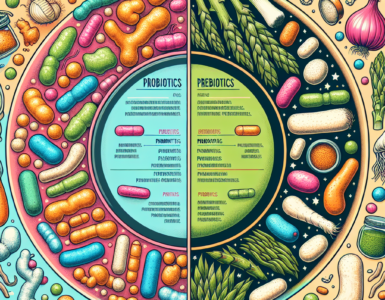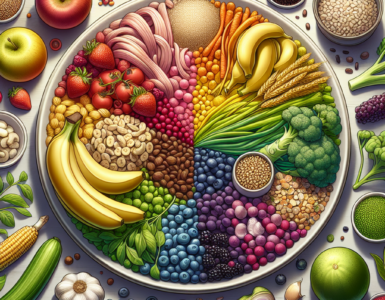The Role of Fats in Nutrition
In the realm of nutrition, fats play a pivotal role, serving as one of the three macronutrients essential to human health. Their functions range from providing energy to supporting cell growth.
Understanding Macronutrients: The Importance of Fats
Fats, alongside proteins and carbohydrates, constitute the macronutrients required in larger amounts for human survival. They are a dense source of energy, offering 9 calories per gram compared to 4 calories per gram from proteins and carbohydrates.
The body utilizes fats as a primary energy reserve, aiding in the absorption of vitamins A, D, E, and K. Moreover, fats contribute to insulation, protecting vital organs and maintaining body temperature. They also play a crucial part in cellular structure and function, specifically in forming the cell membrane.
Despite their essential role, the intake of fats should be balanced with other macronutrients to support overall health and well-being. The table below outlines the percentage of daily calorie intake recommended to come from fats:
| Total Daily Calories | Recommended Fat Intake (%) |
|---|---|
| 2000 | 20 – 35 |
| 2500 | 20 – 35 |
The Historical View of Fats in Diet
Historically, dietary fats have undergone a transformation in public perception. In the mid-20th century, fats were widely vilified, linked to health concerns such as heart disease and obesity. This led to the rise of low-fat diets and products that promised better health outcomes.
However, recent research has shifted the narrative, emphasizing the distinction between ‘healthy fats vs unhealthy fats’ and their respective impacts on health. Understanding this differentiation has become essential in crafting a balanced diet.
In the past, dietary guidelines recommended reducing total fat intake, but contemporary guidelines focus more on the type of fats consumed. Emphasis is now placed on replacing unhealthy fats, such as trans fats and excessive saturated fats, with healthier options like monounsaturated and polyunsaturated fats.
This evolving understanding underscores the complexity of nutrition science and the importance of ongoing research in shaping dietary recommendations. It also highlights the need for individuals to stay informed about the types of fats they incorporate into their diets to optimize their health outcomes.
The Basics of Fats
In the domain of nutrition, fats play a pivotal role and are essential for various bodily functions. Understanding the nature of fats and their utilization by the body is fundamental for making informed dietary decisions.
What Are Fats?
Fats, also referred to as lipids, are a group of macronutrients that are a dense source of energy for the body. Structurally, they are composed of carbon, hydrogen, and oxygen atoms, arranged in a way that makes them hydrophobic (insoluble in water). Fats are categorized into several types, including saturated, unsaturated (which is further divided into monounsaturated and polyunsaturated), and trans fats.
How the Body Uses Fats
Fats are utilized by the body in multiple ways:
- Energy Storage: Fats provide a storage form of energy. When the body’s immediate energy needs are met, excess calories are converted into triglycerides and stored in adipose tissues.
- Hormone Production: Fats are involved in the synthesis of hormones, which are crucial for regulating metabolism, immune function, and overall homeostasis.
- Cell Membrane Integrity: Fats are fundamental components of cell membranes, maintaining their structure and fluidity.
- Nutrient Absorption: Certain vitamins, known as fat-soluble vitamins (A, D, E, and K), require the presence of dietary fat for their absorption and transport throughout the body.
The body’s use of fats can be represented in the following table:
| Function | Description |
|---|---|
| Energy Supply | 9 calories per gram |
| Hormone Synthesis | Building blocks for steroid hormones |
| Cell Structure | Constituents of phospholipids in cell membranes |
| Vitamin Absorption | Facilitates absorption of vitamins A, D, E, and K |
By understanding the distinction between healthy fats and unhealthy fats, one can optimize their fat intake to support overall health and wellness. It is essential to be discerning about the types of fats consumed, as they each have differing impacts on the body’s physiology.
Healthy Fats vs Unhealthy Fats
In the ongoing discussion about diet and wellness, understanding the difference between healthy fats and unhealthy fats is crucial. These distinctions can help health-conscious adults make informed choices about their fat intake and its implications on overall health.
Characteristics of Healthy Fats
Healthy fats, often referred to as “good” fats, are typically unsaturated fats that are liquid at room temperature. They can be further categorized into monounsaturated and polyunsaturated fats. These fats are known for their beneficial effects on the body, including supporting heart health, reducing bad cholesterol levels, and providing essential fatty acids that the body cannot produce on its own.
| Type of Healthy Fat | Sources | Benefits |
|---|---|---|
| Monounsaturated Fats | Olive oil, avocados, nuts | May lower bad cholesterol (LDL) |
| Polyunsaturated Fats | Sunflower oil, fish, flaxseeds | Essential fats like Omega-3 and Omega-6 |
| Omega-3 Fats | Salmon, chia seeds, walnuts | Support brain health, reduce inflammation |
| Omega-6 Fats | Corn oil, sunflower seeds | Promote skin and eye health |
These fats are considered heart-healthy and are key components in a balanced diet. They serve as a source of energy and aid in the absorption of vitamins A, D, E, and K.
Characteristics of Unhealthy Fats
Unhealthy fats, often labeled as “bad” fats, include saturated fats and trans fats. Saturated fats are solid at room temperature and are found in animal products and some plant oils. Trans fats, on the other hand, are created through a process called hydrogenation, which turns liquid oils into solids, extending the shelf life of processed foods.
Both saturated and trans fats have been linked to negative health outcomes, such as an increased risk of heart disease and elevated cholesterol levels. These fats can contribute to the buildup of plaque in the arteries, potentially leading to blockages and cardiovascular problems.
| Type of Unhealthy Fat | Sources | Potential Risks |
|---|---|---|
| Saturated Fats | Red meat, butter, cheese | May increase bad cholesterol (LDL) |
| Trans Fats | Processed snacks, fried foods | Can lead to heart disease, increase bad cholesterol (LDL) |
It is recommended to limit the intake of these fats and to be mindful of their presence in processed and fried foods. By understanding the characteristics of healthy and unhealthy fats, individuals can make better dietary choices that align with their health goals.
Sources of Healthy Fats
In the quest to understand healthy fats versus unhealthy fats, recognizing and sourcing healthy fats is essential. Healthy fats play a vital role in maintaining good health, supporting cell growth, and providing energy. Here we will explore the main types of healthy fats: monounsaturated, polyunsaturated, and omega fatty acids.
Monounsaturated Fats
Monounsaturated fats are a type of dietary fat known to have heart-healthy benefits. They can help reduce bad cholesterol levels in the blood, which may lower the risk of heart disease and stroke. Additionally, they provide nutrients to help develop and maintain the body’s cells.
Sources of monounsaturated fats include:
- Olive oil
- Canola oil
- Avocado
- Nuts, such as almonds, hazelnuts, and pecans
- Seeds, like pumpkin and sesame seeds
It is recommended to incorporate these in moderation into a balanced diet to reap the health benefits.
Polyunsaturated Fats
Polyunsaturated fats are essential fats, meaning they are required for normal body functions but the body can’t make them, so they must be obtained from food. These fats can help reduce the risk of heart disease by lowering blood cholesterol levels.
Common sources of polyunsaturated fats include:
- Sunflower oil
- Corn oil
- Soybean oil
- Walnuts
- Flax seeds
As with monounsaturated fats, moderation is key when incorporating these into your diet.
Omega-3 and Omega-6 Fats
Omega-3 and omega-6 are types of polyunsaturated fats that are especially beneficial to heart health. Omega-3 fatty acids, in particular, are known for their role in brain function and normal growth and development. They have been associated with numerous health benefits, including a lower risk of heart disease.
Primary sources of omega-3 fats include:
- Fatty fish, such as salmon, mackerel, and trout
- Flaxseed oil
- Chia seeds
- Walnuts
Omega-6 fats are found in many common vegetable oils and products made with them, like mayonnaise and salad dressings.
A balanced ratio of omega-3 to omega-6 fats is crucial, as high intake of omega-6 fats can lead to inflammation and related health issues. It is generally recommended to prioritize omega-3 fats and maintain a balanced intake of omega-6 fats.
By understanding the sources of healthy fats, individuals can make informed choices to incorporate these beneficial nutrients into their diet. It is important to note that while fats are essential, portion control remains critical to maintaining a healthy diet and preventing excessive calorie intake.
Sources of Unhealthy Fats
In the discussion of healthy fats versus unhealthy fats, it is just as crucial to identify the sources of fats that may have a detrimental impact on health. This section outlines the primary sources of saturated and trans fats, commonly regarded as less favorable for health when consumed in excess.
Saturated Fats
Saturated fats are a type of dietary fat found predominantly in animal-based products and certain plant oils. They are called “saturated” because they have no double bonds in their chemical structure, meaning they are saturated with hydrogen atoms. While the body needs some saturated fat for physiological functions, high intake has been associated with increased levels of LDL cholesterol, which can raise the risk of heart disease and stroke.
Common sources of saturated fats include:
| Source | Saturated Fat Content (g per 100g) |
|---|---|
| Butter | 51 |
| Cheese | 19-28 |
| Red Meat | 14-18 |
| Coconut Oil | 82 |
| Palm Oil | 49 |
It’s important for individuals to monitor their consumption of saturated fats and aim to keep it within recommended guidelines, which suggest that saturated fats should constitute less than 10% of total daily calories.
Trans Fats
Trans fats, or trans fatty acids, are another form of unhealthy fats that can have serious negative effects on health. These fats are created through an industrial process called hydrogenation, which is used to turn liquid oils into solid fats and improve the shelf life of processed foods.
One of the most concerning aspects of trans fats is their ability to increase LDL cholesterol while decreasing HDL cholesterol, exacerbating the risk of heart disease. Due to their adverse health effects, many food manufacturers have reduced or eliminated trans fats from their products, and some countries have implemented bans on partially hydrogenated oils, the main dietary source of trans fats.
Primary sources of trans fats have included:
| Source | Trans Fat Content (g per 100g) |
|---|---|
| Margarine | 2-3 |
| Shortening | 25-30 |
| Fast Food | Variable |
| Packaged Snacks | Variable |
The recommended intake of trans fats is as low as possible, with health authorities advocating for a maximum of 1% of total daily calories from trans fats. Consumers are advised to read labels carefully, looking for terms like “partially hydrogenated oils” to avoid trans fats in their diet.
Recognizing the sources of unhealthy fats is a step towards making informed dietary choices. By reducing the intake of saturated and trans fats and opting for healthier alternatives, individuals can positively influence their overall health and well-being.
Impact on Health
Effects of Healthy Fats on the Body
Healthy fats, which include monounsaturated and polyunsaturated fats, play a pivotal role in maintaining various bodily functions. They are essential for the absorption of vitamins A, D, E, and K, and are fundamental components of cell membranes. These fats are also involved in hormonal balance and can help reduce inflammation in the body.
Regular consumption of healthy fats is associated with numerous health benefits. They can help improve heart health by maintaining healthy cholesterol levels and lowering the risk of heart disease. Additionally, these fats contribute to brain health, supporting cognitive functions and potentially reducing the risk of neurological disorders.
| Type of Fat | Benefits |
|---|---|
| Monounsaturated Fats | May reduce bad cholesterol levels |
| Polyunsaturated Fats | Essential for cell growth and brain function |
| Omega-3 Fatty Acids | May reduce the risk of coronary heart disease |
Including healthy fats in one’s diet also provides a source of energy and can aid in weight management by promoting a feeling of fullness, thus reducing overall calorie intake.
Risks Associated with Unhealthy Fats
On the other hand, unhealthy fats, primarily saturated fats and trans fats, can pose significant health risks. These fats can increase levels of low-density lipoprotein (LDL) cholesterol in the blood, which is often referred to as “bad” cholesterol. High levels of LDL cholesterol can lead to plaque buildup in arteries, increasing the risk of heart disease and stroke.
Trans fats, in particular, are considered highly detrimental to health. They not only increase LDL cholesterol but also lower high-density lipoprotein (HDL) cholesterol, known as “good” cholesterol, further elevating cardiovascular risk. The consumption of trans fats has also been linked to an increased likelihood of developing type 2 diabetes.
| Type of Fat | Risks |
|---|---|
| Saturated Fats | May increase bad cholesterol levels and heart disease risk |
| Trans Fats | May increase bad cholesterol levels, decrease good cholesterol levels, and increase heart disease and type 2 diabetes risk |
Health organizations recommend minimizing the intake of unhealthy fats and replacing them with healthier options to mitigate these health risks. By understanding the impact of healthy fats vs unhealthy fats, individuals can make informed dietary choices that support their overall health and well-being.
Incorporating Healthy Fats into Your Diet
Incorporating healthy fats into one’s diet is essential for maintaining overall health and well-being. Understanding which foods are high in beneficial fats and how to balance fat intake can help individuals make informed dietary choices.
Identifying Foods High in Healthy Fats
Foods high in healthy fats are predominantly those containing monounsaturated and polyunsaturated fats, including omega-3 and omega-6 fatty acids. Here is a list of foods that are rich in these types of fats:
- Nuts (almonds, walnuts, pistachios)
- Seeds (flaxseeds, chia seeds, sunflower seeds)
- Avocados
- Oily fish (salmon, mackerel, sardines)
- Olive oil
- Canola oil
- Soybean oil
It is beneficial to incorporate a variety of these foods into one’s diet to reap the different health benefits they offer. For instance, nuts and seeds are not only high in healthy fats but also provide fiber and protein. Oily fish are excellent sources of omega-3 fatty acids, which are crucial for heart health.
Balancing Fat Intake
While healthy fats are an important part of a balanced diet, it is equally important to consume them in moderation. The Dietary Guidelines for Americans recommend that fats make up 20-35% of one’s total daily calories. Here is a simple table to help visualize the recommended intake of fats based on a 2,000-calorie diet:
| Total Daily Calories | % Calories from Fat | Total Fat (g/day) |
|---|---|---|
| 2,000 | 20-35% | 44-78 |
To ensure a balanced intake of fats:
- Replace unhealthy fats with healthy ones, rather than simply adding more fat to the diet.
- Pay attention to portion sizes, especially when consuming high-fat foods, as they are calorie-dense.
- Use cooking methods that do not add unnecessary fats, such as baking, grilling, or steaming, instead of frying.
- Be mindful of the fat content in prepared and processed foods, which can contribute to an excessive intake of unhealthy fats.
By focusing on the quality and quantity of fats consumed, individuals can enhance their diet’s nutritional profile and support their overall health.
Reading Labels and Identifying Fat Types
Understanding the types of fats in various foods is key to making informed dietary choices. Food labels and ingredient lists are valuable tools that can help distinguish between healthy fats and unhealthy fats.
Deciphering Nutrition Facts and Ingredients
Analyzing the nutrition facts panel is the first step in identifying what kind of fats are present in a food product. The panel typically lists total fat, saturated fat, trans fat, and sometimes includes monounsaturated and polyunsaturated fats.
Here is a simple breakdown of the fat content one might find on a nutrition label:
| Type of Fat | Recommended Daily Intake |
|---|---|
| Total Fat | Based on individual calorie needs |
| Saturated Fat | Less than 10% of total calories |
| Trans Fat | As low as possible |
It’s also important to look at the ingredient list for sources of these fats. Ingredients are listed in order of quantity, from highest to lowest. This means if unhealthy fats are listed within the first few ingredients, the product is likely high in those fats.
Tips for Spotting Hidden Unhealthy Fats
While trans fats are often explicitly listed on nutrition labels, they can also be hidden in ingredients such as hydrogenated oils or partially hydrogenated oils. Saturated fats might not be as easily spotted unless one knows which ingredients are rich in them.
Here are some tips for spotting hidden unhealthy fats:
- Look out for hydrogenated oils: This term indicates the presence of trans fats.
- Check for tropical oils: Ingredients like palm oil and coconut oil are high in saturated fats.
- Be cautious with shortenings: Many contain high levels of unhealthy fats.
- Consider the order of ingredients: The closer to the top, the higher the content.
To ensure a diet rich in healthy fats and low in unhealthy fats, one should consistently practice reading labels and identifying fat types. This habit can significantly impact overall health and align with nutritional goals focused on a balanced intake of macronutrients.
The Big Picture
How Healthy Fats Complement Overall Nutrition
Healthy fats are a crucial component of a well-rounded diet. They provide essential fatty acids that the body cannot produce on its own, which are vital for various bodily functions. These fats contribute to the absorption of fat-soluble vitamins, including vitamins A, D, E, and K, and are also important for maintaining healthy skin and regulating hormones.
Moreover, healthy fats play a role in satiety. They help people feel fuller longer, which can aid in weight management. Including them in a balanced diet ensures that individuals receive a wide range of benefits, from improved heart health to better brain function.
The following table illustrates the distribution of different types of fats that are recommended for a balanced diet:
| Type of Fat | Recommended Daily Intake |
|---|---|
| Saturated Fats | Less than 10% of total calories |
| Monounsaturated Fats | 15-20% of total calories |
| Polyunsaturated Fats (including Omega-3s and Omega-6s) | 5-10% of total calories |
| Trans Fats | As low as possible |
By understanding the role of healthy fats within a nutrition-focused lifestyle, individuals can make informed decisions about their eating habits and optimize their overall health.
Debunking Myths About Fats
There are several misconceptions about fats that have persisted over time. One common myth is that all fats are equally detrimental to health. This is a misconception; while some fats can have negative health effects, others are essential and beneficial to the body.
Another myth is that eating fat will directly lead to weight gain. In reality, fats are a necessary part of the diet, and when consumed in moderation, they do not contribute to weight gain more than any other macronutrient would. In fact, as mentioned earlier, they can help with weight management by providing satiety.
A further myth is that low-fat or fat-free products are always a healthier choice. These products often contain added sugars or other substitutes to compensate for flavor, which can negate any intended health benefits.
Dispelling myths about fats is crucial for the development of a healthy relationship with food and for adopting a diet that supports long-term well-being. By embracing the complexity of nutrition and the role of various types of fats, health-conscious adults can enjoy a diverse, flavorful, and nutritionally balanced diet.











